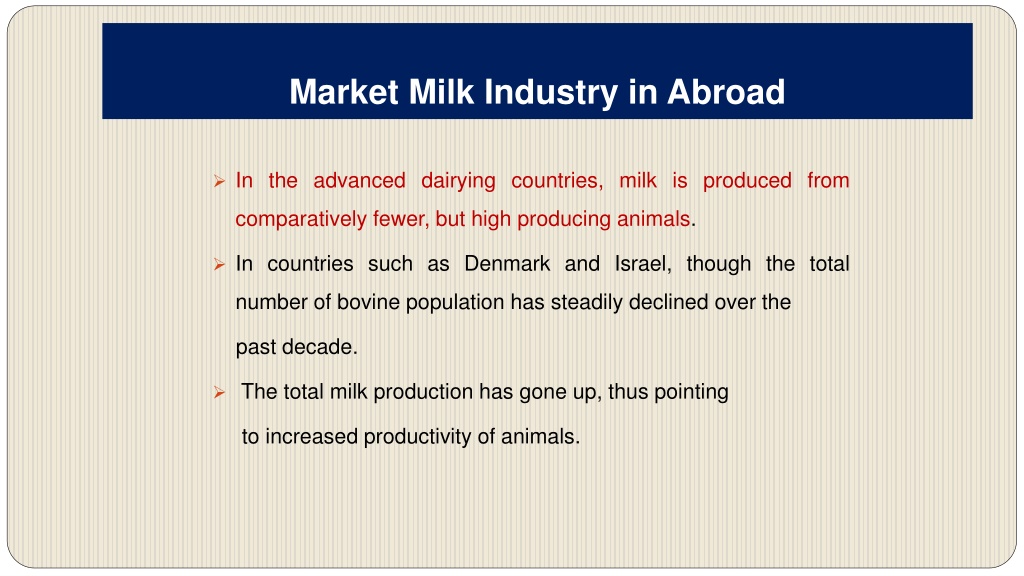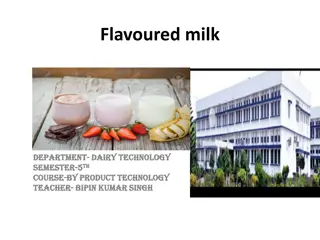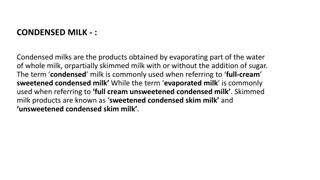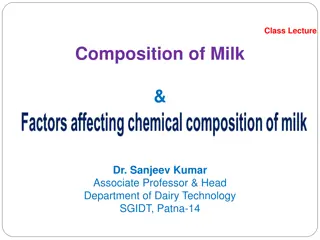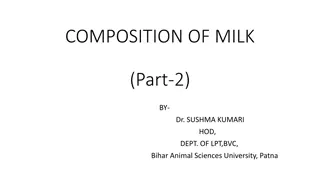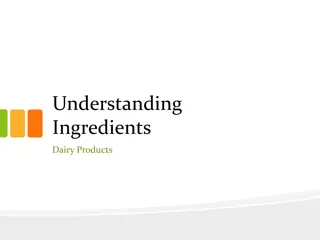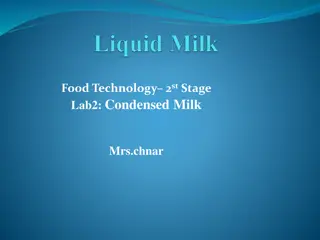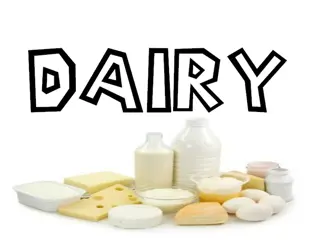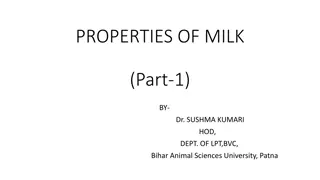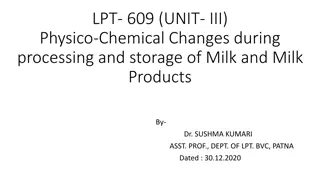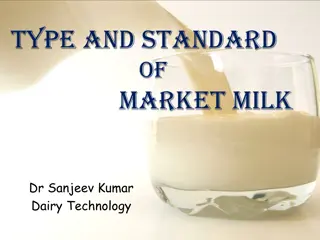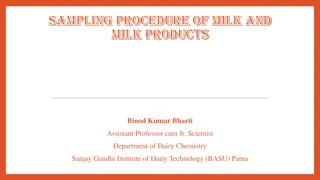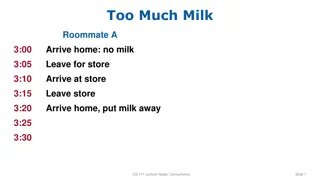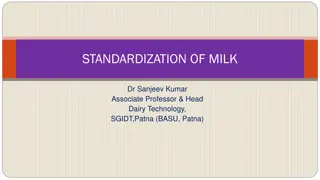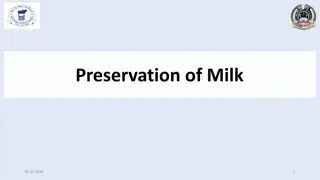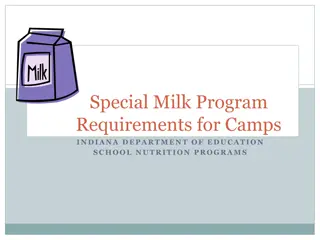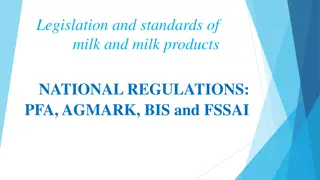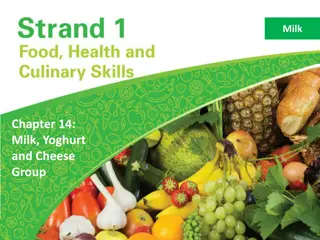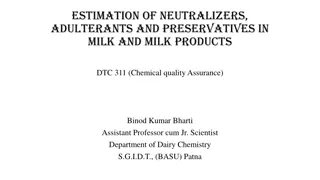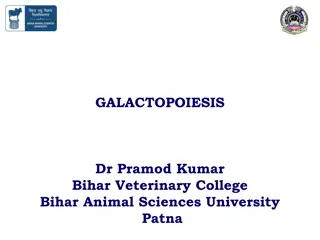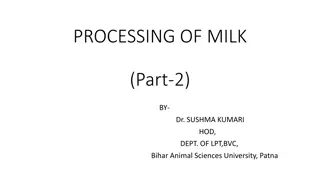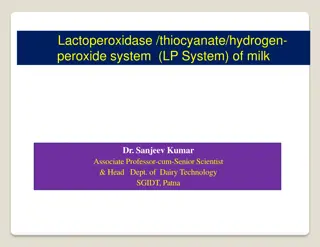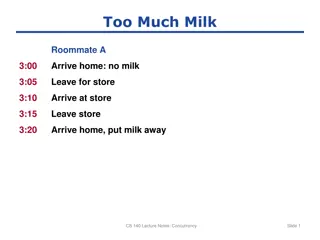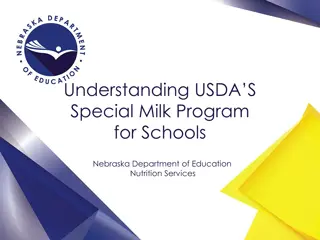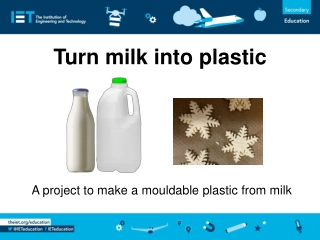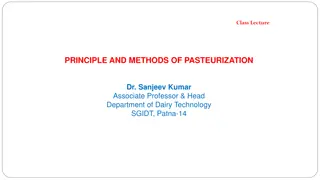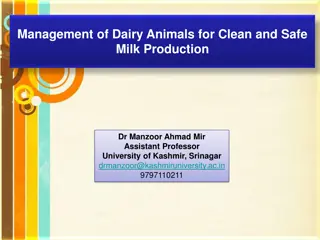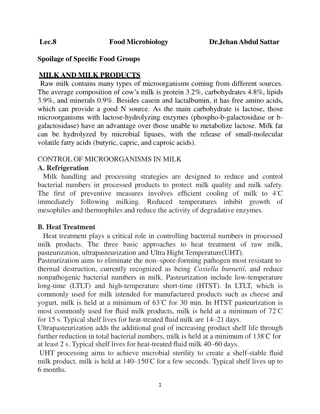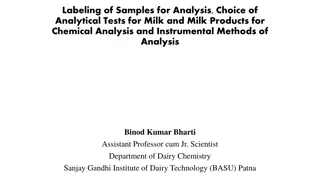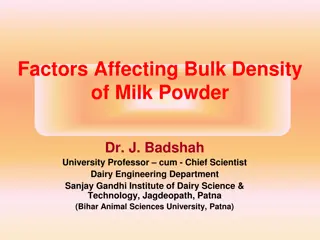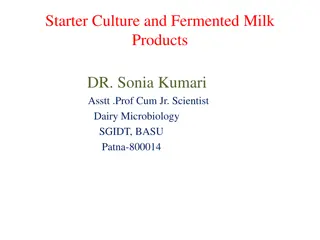Evolution of Milk Industry in Advanced Dairying Countries and India
The milk industry in advanced dairying countries like Denmark and India has seen significant growth and transformation over the years. With a focus on high-producing animals and improved productivity, these countries have become leaders in milk production. India, in particular, has experienced a remarkable journey with the White Revolution leading to it becoming the top milk producer globally. The dairy sector plays a crucial role in the socio-economic development of the nation, providing employment opportunities and ensuring food security.
Download Presentation

Please find below an Image/Link to download the presentation.
The content on the website is provided AS IS for your information and personal use only. It may not be sold, licensed, or shared on other websites without obtaining consent from the author. Download presentation by click this link. If you encounter any issues during the download, it is possible that the publisher has removed the file from their server.
E N D
Presentation Transcript
Market Milk Industry in Abroad In the advanced dairying countries, milk is produced from comparatively fewer, but high producing animals. In countries such as Denmark and Israel, though the total number of bovine population has steadily declined over the past decade. The total milk production has gone up, thus pointing to increased productivity of animals.
Conti----- Market milk industry in the advanced dairying countries of the world - now reached a high level in sanitary production, transportation, processing and distribution. Improved conditions are a result of the passage of dairy and milk-controlled ordinances in neatly all major cities, and of control laws in states where dairying -- important. Credit ---- also be given to many producers, distributors, and manufacturers of dairy equipment for setting high standards.
Credits of Indian Dairying Our country ranks first with its 185.2 million cattle & 97.9 million buffaloes accounting for about 51 percent of Asia s and about 19 per cent of world s bovine population. Also ranks first internationally in milk production with a production of 187.7 million tonnes in 2019-20. Contributing about 5.4 per cent to India s agricultural GDP, milk has become the number one agricultural commodity contributing the highest level. The unique feature of the system --about 125 million rural families engaged in milk production activities as against big specialized dairy farmers in the west.
Transformation of Indian dairy sector through Whiterevolution from milk deficient (17 MT in 1950 s) to top most producer (187.7 MT in 2018-19) which is anticipated to touch the figure of 200 MT by 2021-22. Milk -- the largest agricultural commodity in India followed by other food grains. Success story that involves 15 million farmers linked through a strong network of more than 1 lakh village dairy cooperative societies spread across 346 districts of the nation Great role in Socio-economic development, generation of huge rural employment opportunity and providing quality nutrition 4
Conti- Dairy sector -- 80 million farm households with the triple benefits of nutritive food, supplementary income and productive employment for family labour, mainly for women Dairy sector contribution - around 65-70% to livestock sector About maximum of rural incomes are dependent upon dairying Dairying provides a source of regular income, whereas income from agriculture is seasonal Indian dairying sector --- buffaloes contribute more than 53 per cent of the country s total milk production Buffaloes--- known for their efficiency as converter of coarse feeds into rich milk. Similarly about 45% of total cow milk produced is contributed by crossbred cows 5
Success Story of AMUL: Marketing Lessons Started with 250 L of milk, earned 11,670 Crore, strong network of 8000 distributors and presence in more than 4 lakh retail outlets Invest only 1% on advertisement, efforts to connect with through quality, health, self-pride and emotional appeal. Indian customers 6 Use of Emotions in packaging Nutritional Information & Prospective Use
Indian dairy industry with an estimated size of 70 billion US$ contribute to about 22% of global milk production is growing @ 3-4%, however last few years witnessed growth rate of around 6. 4% ( against global growth rate 1.7%) Level of processing --- around 34%, highest among all food categories Estimates suggest about 15% growth in the processed dairy segment in next five years Increasing consumer demand also witnessing diversification of product profile towards value added products such as yoghurt, dairy beverages, ice creams & cheeses
At least 65% of the milk is consumed at producers level itself and remaining 35% is processed 50% is sold in domestic market of which 50% is sold as liquid milk, 35% as traditional dairy products and 15% for the manufacture of western or industrial dairy products (such as baby food, whey protein concentrate, lactose, casein). Selling of loose milk by milk vendors, dudhiyas- both qualitative & quantitative losses Traditional dairy products: problem of non-uniformity, highly energy intensive processes, absence of mechanization, poor attention to hygiene & safety Poor emphasis on by-product utilization Liquid milk trade is no more a profitable proposition 8
Types of Milk Supply Chain Types of Milk Supply Chain Four major types of milk supply chain exists 45% of milk is consumed as liquid milk But only 33.4% is packed Producer Consumer Producer Trader/Middleman Consumer Producer Collection Contractor Consumer Producer Consumer Processing Collection Major Quality & Safety Issues: High microbial counts, zoonosis, contamination, adulteration, preservatives, inadequate processing & packaging occurrence of 9
Drawback in Indian dairy sectors Despite India s position as highest producer of milk, productivity per animal - very poor. Only about 987 kg/lactation of our Milch animals as against world average of 2,038 kg/lactation. Low productivity - due to the gradual genetic deterioration and general neglect of animals over the centuries and consequent to the rise in the population of non-descript cows (80%) and buffaloes (50%). Other factors contributing to low productivity include continuing draughts in some parts of the country Chronic shortages of feed & fodder coupled with their poor nutritive value and poor fertility of dairy animals. Hence we have to face a twin challenge: Increase milk productivity of animals with the limited resources on one hand and Make best use of the available milk by processing it into hygienic packaged milk and milk products of high quality to give better returns to the farmer.
Summary The Indian dairy scenario Organised milk handling -- made in India with the establishment of Military Dairy Farms (oldest; Allahabad, 1889), Salient features of the market milk industry . Handling of milk in co-operative Milk Unions (oldest : Allahabad, 1913) Established all over the country on a small scale in the early stages Long distance refrigerated rail-transport of milk from Anand to Bombay since 1945. Pasteurization and bottling of milk on a large scale for organized distribution --- started at Aarey (1950), Worli (1961), Calcutta Haringhata, 1959), Delhi (1959), Madras (1963), etc. Establishment of milk plants under the five year plans for Dairy Development all over India. Dual object of increasing the national level of milk consumption and ensuring better returns to the primary milk producer, their main aim was to produce more, better and cheaper milk.
Conti----- Indian Dairy sector ---- gained an vital position in Indian economy by providing secondary source of income for millions of rural families Most important role in providing employment and income generating opportunity. Highest annual per capita consumption of milk, excluding butter---- Finland ( 430.76 kg/capita/yr) Indian dairy industry with an estimated size of 70 billion US$ contribute to about 22% of global milk production India growing @ 3-4%, however last few years witnessed growth rate of around 6. 4% ( against global growth rate 1.7%) Annual per capita consumption of milk in India--- 375g/Day (2018) Total number of liquid milk processing plants under cooperatives -- 386 .
